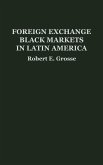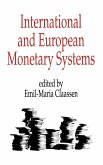European monetary unification has produced a $15 trillion windfall to its member nations that is rarely discussed or accounted for in analyses of economic integration. Edmunds and Marthinsen argue that the reduction in cross-border risks-foreign exchange uncertainty, inflation differentials, competitive devaluations, and protectionism in financial services, among other-is directly responsible for an explosion in the value of fixed income assets and share prices. They explain how this wealth accumulation began to accrue even before the Euro was formally adopted. Could the same thing happen in Latin America or Asia? Elegantly written and cogently argued, this book explores the ramifications of currency unification for each region in three scenarios: partial unification, dollarization, and full unification. The authors compute the increases in wealth created by these various levels of currency unification, provide spreadsheet models that examine the connections between the growth of financial wealth and real economic growth, and emphasize differentials in economic wealth among regions with time series maps that resize nations according to equity markets rather than geography.
Bitte wählen Sie Ihr Anliegen aus.
Rechnungen
Retourenschein anfordern
Bestellstatus
Storno








